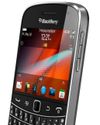
Often referred to as AT, assistive technology was designed to rehabilitate disabled and elderly people who need assistance bathing, dressing, eating, or getting around.
During the initial phase of assistive technology, disabled and elderly people were worried about its operations, and most of them preferred to stay dependent on other humans. After neglecting it for the first few years, they started taking assistive technology seriously, and as a result, they regained independence and mobility.
With the help of AT, they regained more control of their everyday lives and began moving around the city by themselves. For example, since the arrival of electric wheelchairs, disabled and elderly individuals have started going out on their own, whether travelling to work, buying groceries or taking a flight/train to nearby cities.
Today, over one billion people need assistive technology to live productive lives, and the need for AT will continue to rise in the coming years. To stay on the same page with other people, disabled and elderly individuals need to have access to assistive technology at an affordable price to take part in education, work, and family and community life.
TYPES OF ASSISTIVE TECHNOLOGY
Any equipment or item that helps maintain, improve, or increase the functional ability of people with disabilities is considered assistive technology.
• MOBILITY PRODUCTS
Assist with mobility devices - crutches, walkers, wheelchairs, ramps, and grab bars.
• SEEING / VISION PRODUCTS
Assist with low vision or blindness range devices - reading glasses and braille systems.
• HEARING PRODUCTS
Assist with hearing loss and communication devices - hearing aids and alarm signalers.
• COMMUNICATION PRODUCTS
This story is from the August 2024 edition of Exhibit.
Start your 7-day Magzter GOLD free trial to access thousands of curated premium stories, and 9,000+ magazines and newspapers.
Already a subscriber ? Sign In
This story is from the August 2024 edition of Exhibit.
Start your 7-day Magzter GOLD free trial to access thousands of curated premium stories, and 9,000+ magazines and newspapers.
Already a subscriber? Sign In

7 NEW WHATSAPP FEATURES Everyone Is Talking About
Meta’s WhatsApp clinched Google’s Best Multi-Device App Award for 2024, solidifying its reputation as a must-have communication tool.

SONY WF-C510 WIRELESS EARBUDS
THE AFFORDABLE CHOICE FOR QUALITY AUDIO

SAMSUNG GALAXY TAB S10 ULTRA
A PREMIUM TABLET EXPERIENCE

WHAT FITS MY POCKET
When it comes to making smart choices within a ₹30,000 budget, you don't have to compromise on quality or performance. With the right selection, you can equip yourself with a trio of cutting-edge products that balance innovation, utility, and value. Here are three stellar recommendations:

A VIRAL ESCAPE
Evolving Back to Hampi in the Mercedes-Benz GLS 450d

STOP GOOGLE
From Tracking Your Location Without GPS

HOW TO BLOCK SPAM CALLS AND SMS ON JIO USING THE MYJIO APP?
Spam calls and SMS have become unpleasant nuisances.

GUARD YOUR DIGITAL FOOTPRINT
Why You Should Remove Metadata Before Sharing Photos?

10 AWESOME TECH FEATURES OF THE NEW AUDI Q7
Audi’s flagship three-row SUV, the Q7, carries a quiet charm that has made it a favourite for over a decade among those who prefer understated luxury to flashy extravagance.

BLACKBERRY BOLD 9900
Before the rise of touchscreen devices, the BlackBerry Bold 9900 was the ultimate smartphone. Released in 2011, this iconic device was a blend of complexity, functionality, and innovation.